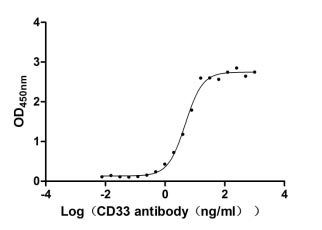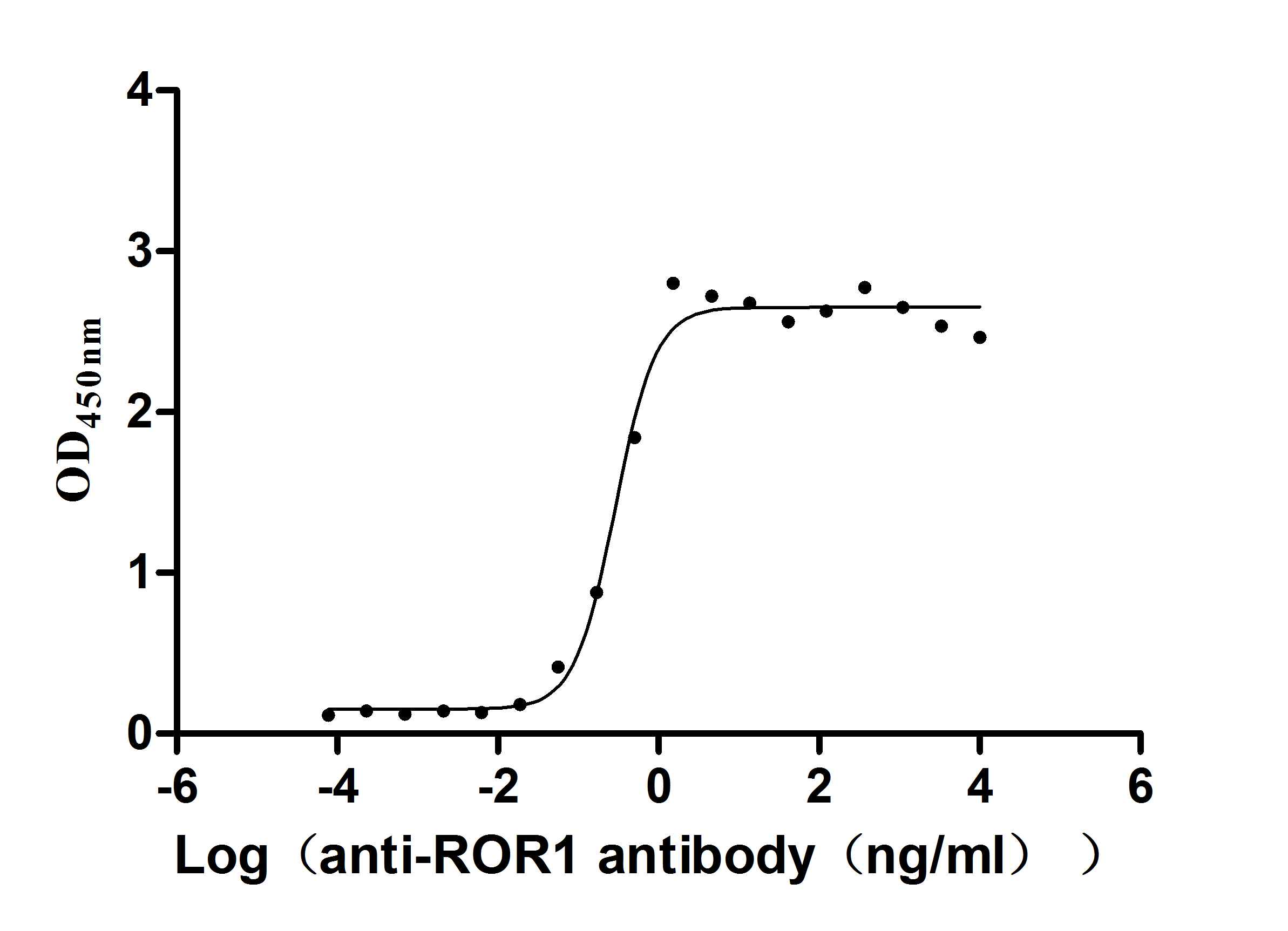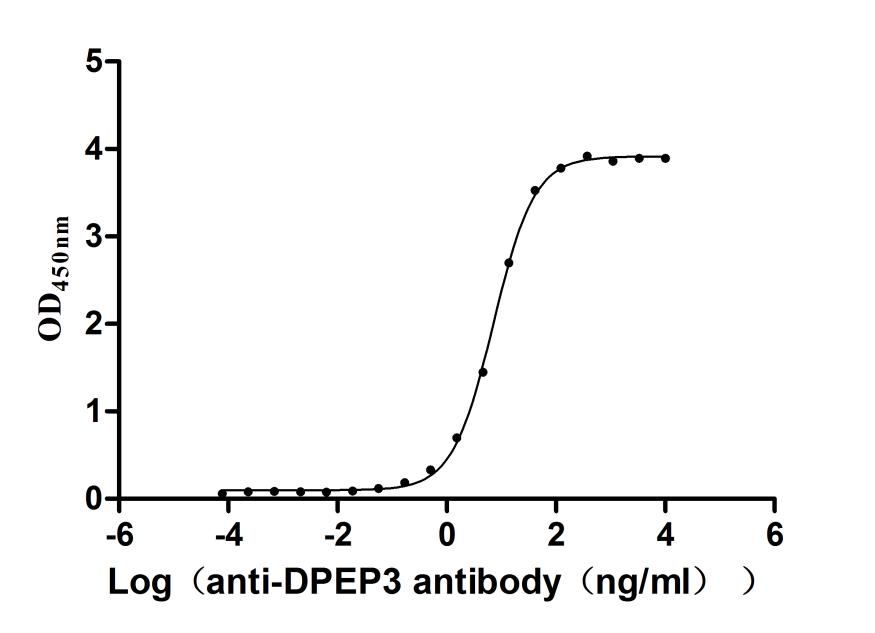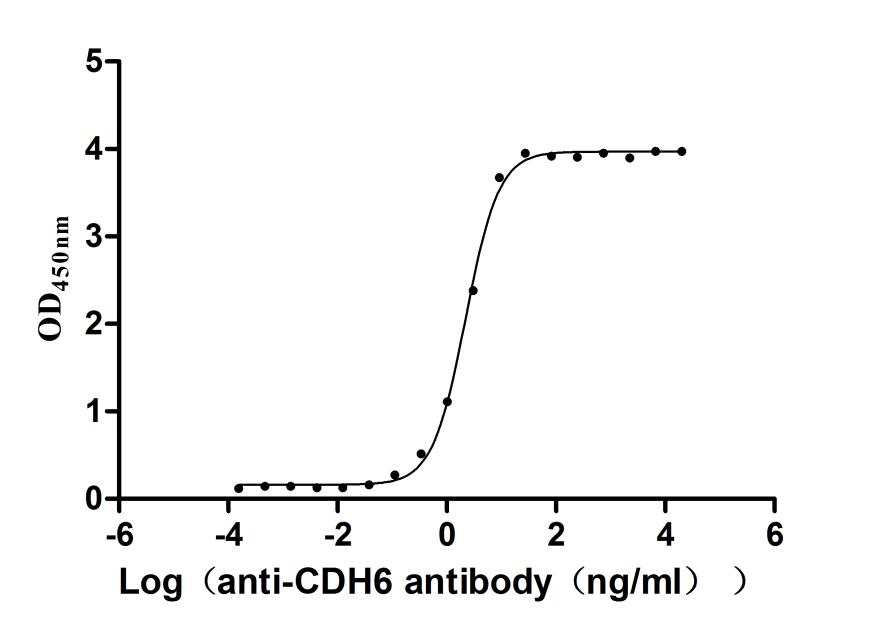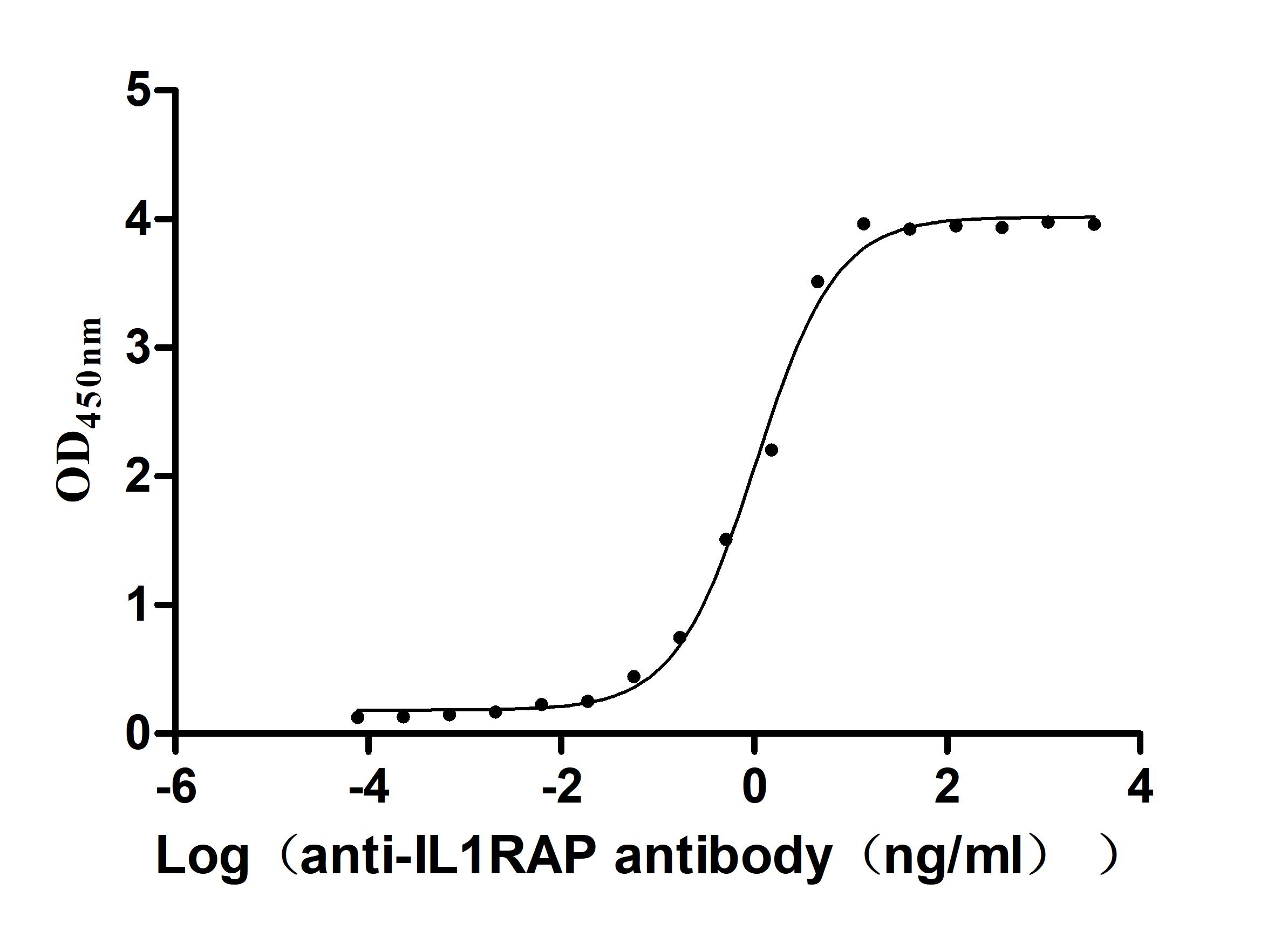Recombinant Rat Corticoliberin (Crh)
-
中文名称:Recombinant Rat Corticoliberin(Crh),Yeast
-
货号:CSB-YP005963RA
-
规格:
-
来源:Yeast
-
其他:
-
中文名称:Recombinant Rat Corticoliberin(Crh),Yeast
-
货号:CSB-EP005963RA
-
规格:
-
来源:E.coli
-
其他:
-
中文名称:Recombinant Rat Corticoliberin(Crh),Yeast
-
货号:CSB-EP005963RA-B
-
规格:
-
来源:E.coli
-
共轭:Avi-tag Biotinylated
E. coli biotin ligase (BirA) is highly specific in covalently attaching biotin to the 15 amino acid AviTag peptide. This recombinant protein was biotinylated in vivo by AviTag-BirA technology, which method is BriA catalyzes amide linkage between the biotin and the specific lysine of the AviTag.
-
其他:
-
中文名称:Recombinant Rat Corticoliberin(Crh),Yeast
-
货号:CSB-BP005963RA
-
规格:
-
来源:Baculovirus
-
其他:
-
中文名称:Recombinant Rat Corticoliberin(Crh),Yeast
-
货号:CSB-MP005963RA
-
规格:
-
来源:Mammalian cell
-
其他:
产品详情
-
纯度:>85% (SDS-PAGE)
-
基因名:Crh
-
Uniprot No.:
-
别名:Crh; Corticoliberin; Corticotropin-releasing factor; CRF; Corticotropin-releasing hormone
-
种属:Rattus norvegicus (Rat)
-
蛋白长度:Cytoplasmic domain
-
表达区域:145-185
-
氨基酸序列SEEPPI SLDLTFHLLR EVLEMARAEQ LAQQAHSNRK LMEII
-
蛋白标签:Tag type will be determined during the manufacturing process.
The tag type will be determined during production process. If you have specified tag type, please tell us and we will develop the specified tag preferentially. -
产品提供形式:Lyophilized powder
Note: We will preferentially ship the format that we have in stock, however, if you have any special requirement for the format, please remark your requirement when placing the order, we will prepare according to your demand. -
复溶:We recommend that this vial be briefly centrifuged prior to opening to bring the contents to the bottom. Please reconstitute protein in deionized sterile water to a concentration of 0.1-1.0 mg/mL.We recommend to add 5-50% of glycerol (final concentration) and aliquot for long-term storage at -20℃/-80℃. Our default final concentration of glycerol is 50%. Customers could use it as reference.
-
储存条件:Store at -20°C/-80°C upon receipt, aliquoting is necessary for mutiple use. Avoid repeated freeze-thaw cycles.
-
保质期:The shelf life is related to many factors, storage state, buffer ingredients, storage temperature and the stability of the protein itself.
Generally, the shelf life of liquid form is 6 months at -20°C/-80°C. The shelf life of lyophilized form is 12 months at -20°C/-80°C. -
货期:Delivery time may differ from different purchasing way or location, please kindly consult your local distributors for specific delivery time.Note: All of our proteins are default shipped with normal blue ice packs, if you request to ship with dry ice, please communicate with us in advance and extra fees will be charged.
-
注意事项:Repeated freezing and thawing is not recommended. Store working aliquots at 4°C for up to one week.
-
Datasheet :Please contact us to get it.
相关产品
靶点详情
-
功能:Hormone regulating the release of corticotropin from pituitary gland. Induces NLRP6 in intestinal epithelial cells, hence may influence gut microbiota profile.
-
基因功能参考文献:
- These findings robustly demonstrate aberrant interactions of stress and reward networks after early-life adversity and suggest mechanistic roles for Crh-expressing amygdala neurons in emotional deficits portending major neuropsychiatric disorders. PMID: 29033027
- CRF (25-200 nM) concentration-dependently diminished evoked compound excitatory postsynaptic potentials, but increased miniature excitatory postsynaptic current frequencies similarly in central amygdala neurons of both naive and ethanol-dependent rats, indicating reduced evoked glutamatergic responses and enhanced vesicular glutamate release, respectively. CRF primarily acts at presynaptic CRF1. PMID: 28807676
- the results from the present study suggest that the activation of the CRF system in anxiety-related regions (such as the cingulate cortex, the hippocampus, the amygdala) PMID: 28935440
- Results of the present study indicate that corticotropin-releasing factor neurons are the output neurons of the oval nucleus of the bed nucleus of the stria terminalis and they send projections not only to the centres of neuroendocrine and autonomic regulation, but also regions modulating reward and motivation, vigilance and motor function, as well as affective behaviour. PMID: 27805752
- Chronic restraint stress (5 weeks, 3h/day) attenuated CRF expression in the paraventricular nucleus of the hypothalamus and dentate gyrus of high-anxiety rats, which was probably due to dysregulation of hormonal feedback mechanisms and enhancement of local neurodegenerative processes; induced symptoms of anhedonia (decreased consumption of 1% sucrose solution) in high-anxiety rats. PMID: 27150225
- Results from this study demonstrate the convergence of three important systems, norepinephrine, corticotropin-releasing factor, and delta opioid receptors, in the amygdala and provide insight into their functional role in modulating stress and anxiety responses. PMID: 27376372
- The CRF plays important roles in responses to stress in extrahypothalamic circuits such as the mesocorticolimbic dopamine system. PMID: 26387568
- QRFP-dependent pathways are involved in the regulation of CRF gene expression in the hypothalamus. PMID: 27452579
- These results suggest that predator odor and EPM exposure activates CRF neurons in the BNST to a much greater extent than CRF neurons of the central amygdala. PMID: 26821289
- Corticotropin-releasing hormone was increased in the paraventricular nucleus following chronic mild stress. PMID: 26578428
- This study provides evidence that corticotropin releasing factor neurons in the central nucleus of the amygdala may play a role in the anxiety-like state produced in a subset of rats exposed to footshocks. PMID: 26363852
- Chronic noise stress upregulated CRH mRNA levels in the hypothalamus. PMID: 26333123
- immunofluorescence double staining showed that CRF was extensively colocalized with neurons, but hardly with astrocytes or microglia PMID: 26138585
- Neuronal TLR4/MCP-1 signal was sustained during alcohol drinking by increased expression of corticotropin-releasing factor and its feedback regulation of TLR4 expression, likely contributing to the transition to alcohol dependence PMID: 25567426
- Electroacupuncture significantly reduces visceral hypersensitivity in rats, and regulated the expression of CRH protein and mRNA in the colon, spinal cord and hypothalamus. PMID: 26109804
- Study shows that pain-induced anxiety is mediated by corticotropin-releasing factor neurotransmission in the locus coeruleus through extracellular signal-regulated kinases 1/2 signaling cascade PMID: 25716783
- Prenatal stress is associated with the demethylation of the CRH promoter. PMID: 24682755
- The differentiated behavioral stress responses were reflected by gene expression changes in the pituitary. Alterations in the mRNA levels of Crh, Ucn2 and Ucn3 in the pituitary might confirm the paracrine and/or autocrine effects of these peptides PMID: 25236411
- A significantly increased hippocampal CRH was observed in the adult rats with postnatal maternal separation. PMID: 24718660
- Results show that hypertension triggers downregulation of CRF gene expression in the amygdala and significantly alters the heart rate response to acute stress but does not alter the pressor response to stress compared to normotensive controls PMID: 25139171
- differential effects of RLN3 on CRF expression in the paraventricular hypothalamic nucleus and bed nucleus of the stria terminalis may contribute to the sex-specific difference in behavioral response PMID: 25406021
- In this mini-review, we will focus on novel and evolving concepts regarding the potential mechanisms underlying the short and long-term effects of prenatal stress involving CRH peptide family. PMID: 25433848
- The expression profile of this key limbic brain CRF system might contribute to the complex neural mechanisms underlying the increasing incidence of early onset of puberty on the one hand and infertility on the other attributed to chronic stress. PMID: 25051447
- Overexpression of FosB or cJun potently increases CRF mRNA levels. PMID: 24246425
- Transcriptional repression of CRH by glucocorticoids involves protein-protein interactions and/or modulation of afferent inputs to the hypothalamic paraventricular nucleus. PMID: 24065704
- We can conclude that the orexigenic effect of mu-opioid receptor activation by EM-2 could be related to both inhibition of CRH and stimulation of dopamine and norepinephrine levels, in the hypothalamus PMID: 23916912
- demonstrated the existence of genetically determined high basal CRF mRNA levels in central amygdala of Sardinian alcohol-preferring rats. PMID: 24021806
- data demonstrate stable changes in methylation patterns and expression of the GR and CRF genes following repeated stress. PMID: 23084728
- Alcohol self-administration reduces the number of CRF-labeled cells in the central amygdala. PMID: 23628776
- data suggest that the observed impairment in learning was not a result of alteration in HPA axis activity, but rather due to reduced PVN-CRF activity. PMID: 23568325
- studies demonstrate that CRF neurons within the lateral BNST modulate conditioned anxiety-like behaviors and also suggest that enhanced CRF expression within these neurons may contribute to inappropriate regulation of emotional memories PMID: 22290119
- Studied levels of amygdaloid CRF in the anxiolytic effect of acupuncture during ethanol withdrawal. PMID: 24139460
- Over-expression of CRH and vasopressin in the magnocellular paraventricular nucleus represents a specific feature of anxiety/post traumatic stress disorder-like state. PMID: 24317347
- The imbalance in lower production of anorexigenic neuropeptide CRF in the paraventricular hypothalamic nucleus may favor overeating and increased body weight gain in chronically stressed food-restricted female rats. PMID: 23425370
- ERK1/2 activation in response to CRH is biphasic, involving a first cAMP- and B-Raf-dependent early phase and a second phase that critically depends on CRHR1 internalization and beta-arrestin2. PMID: 23371389
- CRF and hypothalamic neuronal histamine mediate the suppressive effects of BDNF on feeding behavior and body weight. PMID: 23432085
- CRF acts in the ventral tegmental area to reduce the motivation to work for food rewards by regulating dopamine output in a stimulus- and pathway-specific manner. PMID: 23416448
- Interactions between corticosterone and catecholaminergic projections to the hypothalamus therefore make significant contributions to the regulation of Crh and Avp expression. PMID: 22831701
- Under conditions associated with CRF release at the locus coeruleus projection system, including stress, the transfer of afferent information within sensory systems is impaired. PMID: 22510725
- Corticotropin releasing hormone act on CRHR1 to induce MKLP1 expression via the PLC/PKC signaling pathway. PMID: 22698524
- GLP-1 directly stimulated the promoter activities and mRNA levels of both CRF and AVP in hypothalamic 4B cells PMID: 22801106
- These data demonstrate that CRF triggers increases in intestinal paracellular permeability via mast cell dependent release of TNF-alpha and proteases. PMID: 22768175
- Hypomethylation of the CRH promoter CRE, a region critical for CRH transcriptional activation, could serve as a mechanism for the increased transcriptional responses to stress observed in maternally deprived rats. PMID: 22375940
- the CRF system may contribute to both the behavioral response during social stress and its behavioral and autonomic consequences PMID: 22322324
- Data suggest that CRH regulates dendritic outgrowth in cultured hippocampal neurons/pyramidal cells; signaling via CRH-receptor 1 (CRH-R1) stimulates dendritic growth; CRH- receptor 2 (CRH-R2) activation results in inhibition of dendritic growth. PMID: 22249942
- nucleus accumbens shellCRF can generate a variety of aversive behaviors PMID: 22245501
- after chronic constriction injury of the rat sciatic nerve, the oval bed nucleus of the stria terminalis contained substantially more Crf mRNA as did the central amygdala PMID: 21684787
- These findings indicate that reproductive experience modulates the effects of estrogen receptor alpha activation on both maze behavior related to anxiety and corticotrophin-releasing hormone gene expression. PMID: 22033279
- During acute stress, arginine vasopressin interacts with the paraventricular hypothalamic nucleus and amygdala to change their rates of biosynthesis and/or release of corticotrophin releasing factor (CRF). PMID: 21621194
- An 8-week ethanol vapos regimen significantly increased CRF levels in the hippocampus and parietal cortex. PMID: 21527271
显示更多
收起更多
-
亚细胞定位:Secreted.
-
蛋白家族:Sauvagine/corticotropin-releasing factor/urotensin I family
-
组织特异性:Produced by the hypothalamus.
-
数据库链接:
KEGG: rno:81648
STRING: 10116.ENSRNOP00000016953
UniGene: Rn.10349
Most popular with customers
-
Recombinant Human Myeloid cell surface antigen CD33 (CD33), partial (Active)
Express system: Mammalian cell
Species: Homo sapiens (Human)
-
Recombinant Human Tumor necrosis factor ligand superfamily member 8 (TNFSF8), partial (Active)
Express system: Mammalian cell
Species: Homo sapiens (Human)
-
Express system: Mammalian cell
Species: Homo sapiens (Human)
-
Recombinant Macaca fascicularis Trophoblast glycoprotein (TPBG), partial (Active)
Express system: Mammalian cell
Species: Macaca fascicularis (Crab-eating macaque) (Cynomolgus monkey)
-
Recombinant Macaca fascicularis lymphocyte antigen 6 family member G6D (LY6G6D) (Active)
Express system: Yeast
Species: Macaca fascicularis (Crab-eating macaque) (Cynomolgus monkey)
-
Recombinant Human Dipeptidase 3(DPEP3), partial (Active)
Express system: Mammalian cell
Species: Homo sapiens (Human)
-
Recombinant Macaca fascicularis Cadherin 6(CDH6),partial (Active)
Express system: Mammalian cell
Species: Macaca fascicularis (Crab-eating macaque) (Cynomolgus monkey)
-
Recombinant Macaca fascicularis Interleukin 1 receptor accessory protein(IL1RAP), partial (Active)
Express system: Mammalian cell
Species: Macaca fascicularis (Crab-eating macaque) (Cynomolgus monkey)


